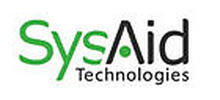When I first saw Windows 8, I cried out in distress. Yes, it had a beautiful user interface that’s naturally fluid on a touch device, but on that particular day I wasn’t using a touch device. I was installing a new desktop for my mother-in-law, and the Metro UI, Microsoft’s new interface optimized for tablet computing, proved clumsy to use with a mouse, especially when compared to the recognizable Start Menu that has been part of Windows since Windows 95. I do applaud Microsoft for trying to push consumers to a touch interface as a transition into the dominant mobile age. Unfortunately, the Windows 8 product mirrors the failure of Windows Vista, and Windows 8 simply didn’t see the adoption rate of its predecessor.
After I downloaded the Windows 10 technical preview last week, I cried tears again. But, this time, they were tears of joy. The new operating system, while still undergoing final development, looked more like Windows 7 than 8, and there again was my good friend, the Start Menu. Although it still looks a little different, there are hints that Microsoft built Windows 10 with the desktop user in mind (especially with the new feature of multiple desktops – a feature long found on Mac and Unix/Linux), but there are added elements that shows Microsoft has built a hybrid interface for everyone to enjoy.
Featured Download: Social media access at work. Do your employees know the rules?
While Windows 8 was an attempt to go “all in” with a mobile market strategy, Windows 10, in my opinion, proves Microsoft thinks people are still more comfortable working on a desktop or laptop for day-to-day activities. Also showing in the desktop version are elements of the Metro UI. In fact, applications for Windows 10 are to be developed for both a desktop interface, and to support Metro, creating a hybrid ecosystem for both desktops and tablets. So as the end of life for Windows 7 approaches, businesses will be able to migrate existing applications and desktops to Windows 10 without incurring strong negative feedback from users, much the same reason why several IT organizations skipped Windows Vista and went straight to Windows 7.
Microsoft does have an ace up its sleeve with Windows 10. Once IT departments migrate their desktops and laptops to the newest Windows, the step to a touch UI on a mobile device will prove to be a minor leap in IT evolution instead of the revolutionary attempt by Windows 8. As tablets replace desktops as primary workstations, users can make the move to a Windows tablet or even to a Windows Phone and still see common user interface elements reflective of using Windows on a desktop. By building a hybrid OS, both with a desktop and touch-user interface, Windows 10, in my opinion, is positioned to be the missing link to transition large user communities into the tablet-toting workforce that IT thought leaders have been waiting to see.
By Michael Slabodnick, Customer Community Manager, SysAid Technologies
About SysAid Technologies
 SysAid is a leading provider of IT service management (ITSM) solutions that enable IT professionals to manage their IT infrastructures with greater ease and efficiency. Our aim is to simplify the daily challenges that IT professionals face with intuitive, innovative, and cost-effective solutions that combine uncompromising performance with ease-of-use.
SysAid is a leading provider of IT service management (ITSM) solutions that enable IT professionals to manage their IT infrastructures with greater ease and efficiency. Our aim is to simplify the daily challenges that IT professionals face with intuitive, innovative, and cost-effective solutions that combine uncompromising performance with ease-of-use.
100% driven by its customers and available in 42 languages, SysAid serves organizations spanning all industries and sizes—from SMBs to Fortune 500 corporations
The opinions expressed in this post belongs to the individual contributors and do not necessarily reflect the views of Information Security Buzz.



